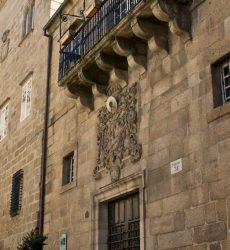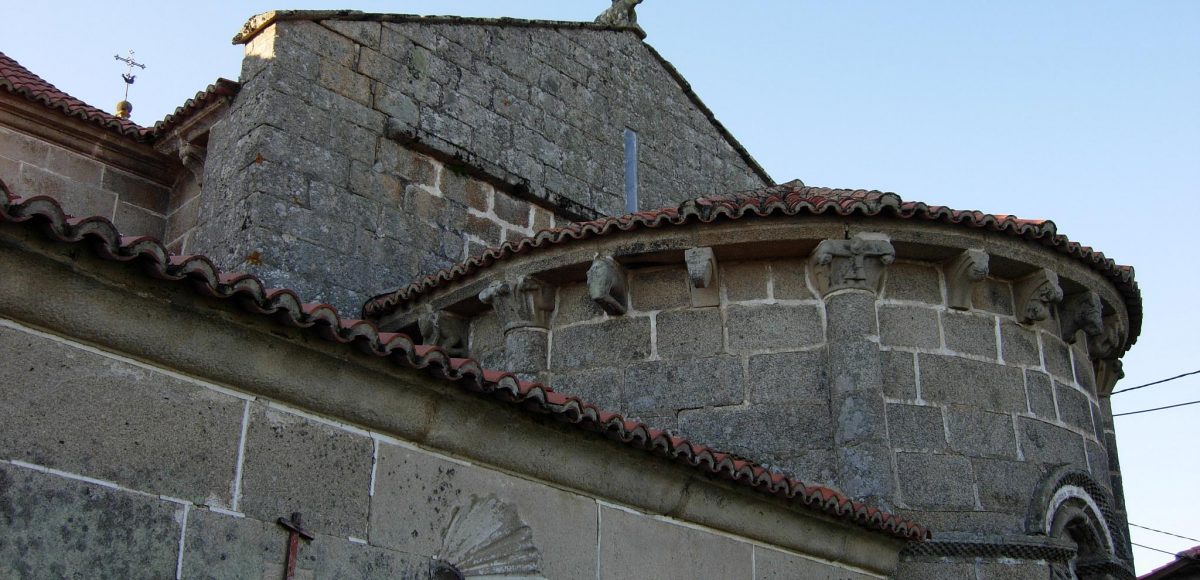
St. Eulalia’s Church in Beiro
32981
A reference and an example of rural Romanesque in Galicia, this parish church in the village of Beiro retains much of its original appearance.
The church of St. Eulalia in Beiro is a benchmark and example of Galician rural Romanesque, as it retains much of its original appearance. Given the similarity with the gate of the Claustra Nova, it can be dated at the early 13th century.
The main gate (with a doorway added centuries later) has two semicircular archivolts with vegetal decoration with a clear Matean influence, as well as the capitals. The original tympanum is not preserved but its support is; in it we can see some monstrous animal heads. On the gate, eaves are supported by largely figurative corbels, highlighting a man sitting with a book and another one drinking from a barrel.
The apse is divided into five parts, although one is partially covered by the sacristy. At the top and as a finish, an Agnus Dei. The corbels that support the roof contain figurative elements, animal ones (like the monkey that covers its ears) and vegetal ones. The windows are semicircular with checkered arches and supported by a pair of columns and figurative and vegetal capitals.
On the north side, a molded gate. In the impost we find a curious decoration, the body of a snake, while the tympanum represents a wolf.
In the interior, with a single nave plan and a semicircular apse, the Romanesque decoration focuses on the capitals. The one on the gospel side with four gryphons, a motif repeated in the apse window; the one in the epistle has vegetal decoration. A barrel vault covers the chancel, whose 16th-century coffered ceilings stand out.
A tour to follow the trail of this purely medieval style in the city. The walk begins at St. Martin’s Cathedral and continues exploring the still unknown rural Ourense.


